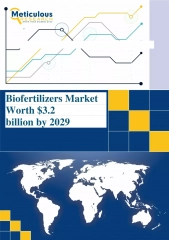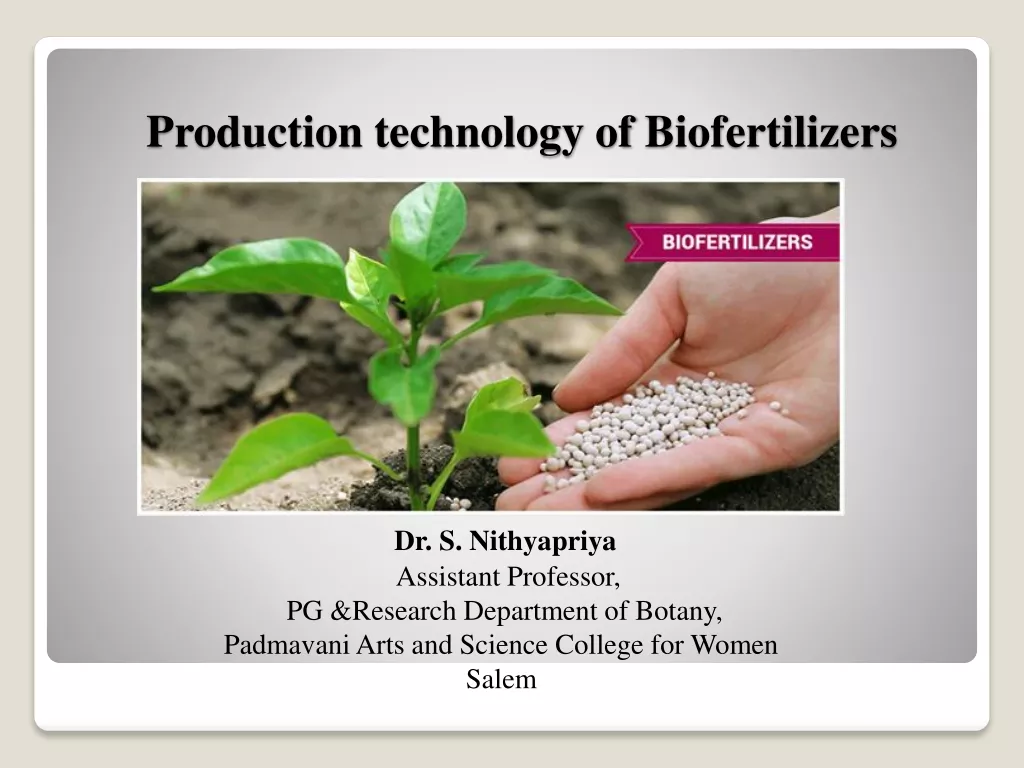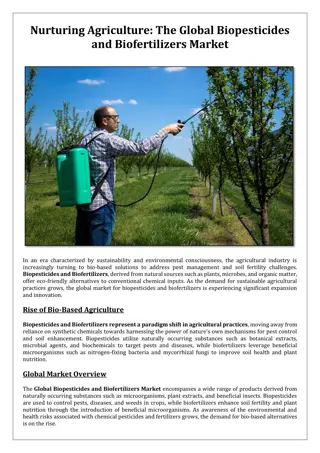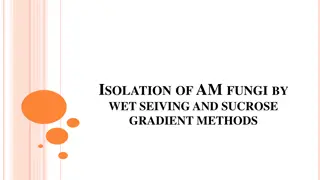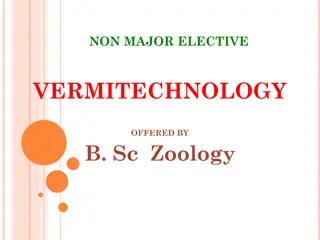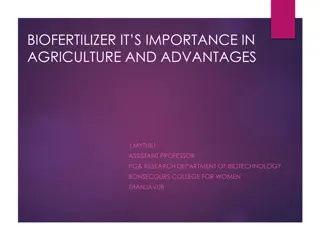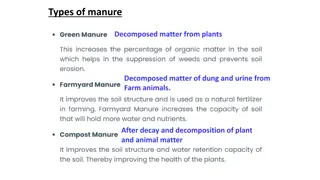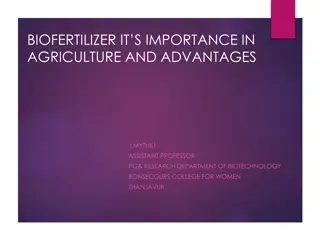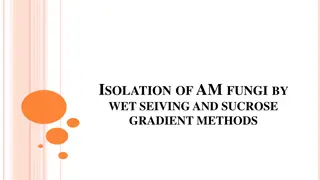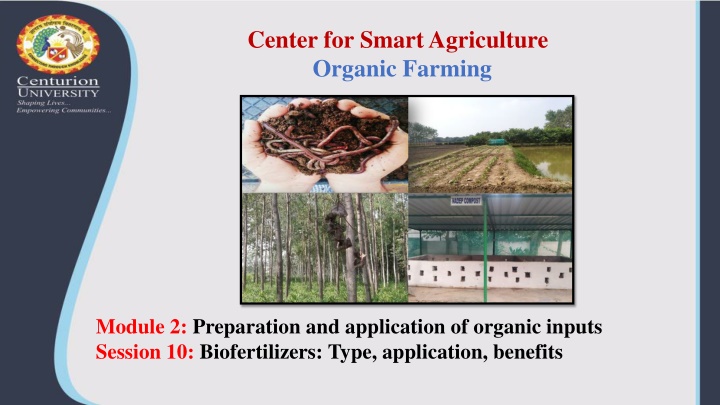
Organic Farming Biofertilizers: Types, Applications & Benefits
Learn about biofertilizers in organic farming, including their definition, types, methods of application - seed treatment, root dipping, and soil application. Understand the benefits of using biofertilizers as a cost-effective and renewable source of plant nutrients.
Download Presentation

Please find below an Image/Link to download the presentation.
The content on the website is provided AS IS for your information and personal use only. It may not be sold, licensed, or shared on other websites without obtaining consent from the author. If you encounter any issues during the download, it is possible that the publisher has removed the file from their server.
You are allowed to download the files provided on this website for personal or commercial use, subject to the condition that they are used lawfully. All files are the property of their respective owners.
The content on the website is provided AS IS for your information and personal use only. It may not be sold, licensed, or shared on other websites without obtaining consent from the author.
E N D
Presentation Transcript
Center for Smart Agriculture Organic Farming Module 2: Preparation and application of organic inputs Session 10: Biofertilizers: Type, application, benefits
Bio-fertilizers are defined as preparations containing living cells or latent cells of efficient strains of microorganisms that help crop plants for uptake of nutrients by their interactions in the rhizosphere when applied through seed, roots or soil. They accelerate certain microbial processes in the soil which augment the extent of availability of nutrients in a form easily assimilated by plants. Use of biofertilizers is one of the important components of organic nutrient management, as they are cost effective and renewable source of plant nutrients.
There are three ways of using biofertilizers 1. Seed treatment 2. Root dipping 3. Soil application
Seed Treatment Seed Treatment is a most common method adopted for all types of inoculants. The seed treatment is effective and economic. In case of solid formulation, 200 g of carrier based biofertilizers are suspended in 300- 400 ml of water and mixed thoroughly. Ten kg seeds are mixed and treated with this paste and dried in shade. The treated seeds have to be sown as soon as possible. For application of liquid biofertilizer, a plastic bag having size (21 x 10 ) can be used. The bag should be filled with 2 kg or more of seeds. The bag should be closed in such a way to trap the airs as much as possible. The bag should be squeezed for 2 minutes or more until all the seed are uniformly wetted. Then bag is opened, inflated again and shaked gently. Stop shaking after each seeds gets a uniform layer of culture coating. The bag is opened and the seed is dried under the shade for 20-30 minutes.
Root dipping For application of Azospirillum/ /PSM on paddy transplanting/ vegetable crops this method is used. The required quantity of Azospirillum/ /PSM of 200 ml liquid inoculant or 200 g carrier based biofertilizerhas to be mixed with 5-10 litres of water at one corner of the field and the roots of seedlings has to be dipped for a minimum of half-an-hour before transplantation
Soil application In case of liquid formulation, use 200ml of PSM per acre. Mix PSM with 400 to 600 kg of FYM along with bags(25kg) of rock phosphate if available. The mixture of PSM, FYM and rock phosphate have should be kept under any tree or under shade for overnight and maintain 50% moisture. Use the mixture as soil application in rows or during leveling of soil. In case of carrier based formulations, 6 kg of biofertilizers are mixed in 400 to 600 kg of compost and kept overnight under shade by maintaining 50% moisture and applied.
Sl. No. Particulars Micro-organisms N fixing biofertilizers 1 Free living Azotobacter, Beijerinkia, Clostridium, Klebsiella, Anabaena, Nostoc 2 Symbiotic Rhizobium, Frankia, Anabaena azollae 3 Associative Symbiotic Azospirillum P solubilizing biofertilizers 1 Bacteria Bacillus megaterium var. phosphaticum, Bacillus subtilis Bacillus circulans, Pseudomonas striata 2 Fungi Penicilliumsp, Aspergillusawamori P mobilizing biofertilizers 1 Vesicular Glomussp.,Gigasporasp.,Acaulospora sp., Arbuscularmycorrhiza Scutellospora sp. & Sclerocystis sp. 2 Ectomycorrhiza Laccaria sp., Pisolithus sp., Boletus sp., Amanita sp. 3 Ericoid mycorrhizae Pezizellaericae 4 Orchid mycorrhiza Rhizoctoniasolani K mobilizing biofertilizers 1 Bacteria Frateuriaaurantia Micronutrient solubilizing biofertilizers 1 Zinc and silicate solubilizer Bacillus sp.

